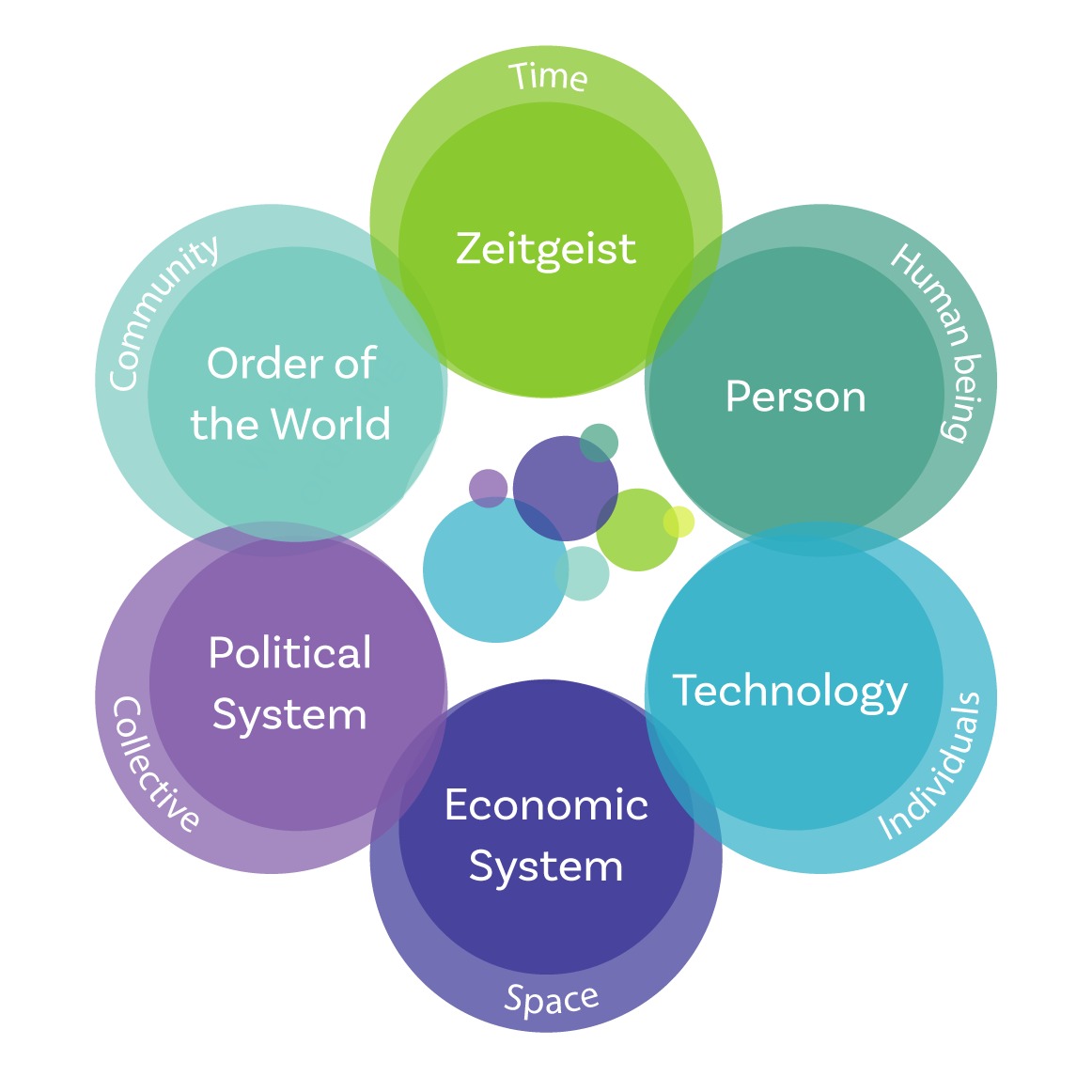What is Design Thinking?
Design Thinking is an open mindset to be creative ...
- Solve Problems
- Find ideas for new products or services
- Develop strategies and
- Support change in businesses
Design Thinking was made popular by Larry Leifer, David Kelley and Terry Winograd (Stanford University). The origins came from the Bauhaus Faculty, which had been training its students in this approach since the 1920s. In Design Thinking, it is important to bring together as many different experiences and perspectives of people as possible. Design Thinking deals with these central questions:
- What problem can be solved?
- What real added value can be created?
- How can enthusiasm be aroused?
People are always the focus - new offers should be created for people.
Design Thinking belongs to the agile methods - often to find innovative ideas before they are realized with Agile Engineering.
What is 360º Design Thinking?
360° Design Thinking: Focus on people and what influences them.
We consider the human being as a whole - the personality with your wishes and values within the systems in which every human being moves. From this we draw inspiration for something new, for more sustainable, better products and services. Combined with the Bauhaus approach - the contemplation of the human being, with everything that makes him unique, in which time and which systems he moves - leads us to 360° Design Thinking.

How does Design Thinking work?
In Design Thinking, an interdisciplinary team works together to develop deep empathy for the customer/end user/target group. The aim is to discover new things, to be open to experimentation and to engage in the unknown.
Understand - Research - Recognize - Fantasize - Try - Test ...
Through these iterative steps in the design thinking process new solutions are always found - not predictable - but so good that a clear picture emerges. At the end of the day, customers decide whether they are enthusiastic about the new solution and whether they pay money for it.
The Design Thinking process, led by a moderator, guides the team through the creative process. The individual modules (phases) ensure continuous progress, enable early iterations and rapid solution finding (prototypes). This solution can be tested with customers until they show enthusiasm, want to take over or buy the solution.
Why does it matter?
The mindset of 360° Design Thinking meets the zeitgeist of
- rapid changes
- networking in all areas of life
- agile cooperation
- flexible adaptation to new requirements
and influences the development of solutions.
We look at the system in which a person moves, be it team structures, processes or organizations - and the problems that arise from them - in order to find solutions through a changed perspective.
Thus 360° Design Thinking can help us to transform companies and establish distinctive products and services for our customers.
